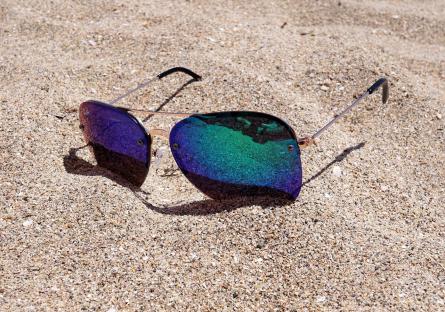
We are officially at “you can fry an egg on the pavement” temperatures. The summer heat is scorching and unrelenting. This is the time of the year where you need to play it safe wherever you go outside. If you’re looking for ways to keep them from scoring a goal on your skin, read on as we break down a few things you can do to protect yourself from the sun’s damaging ultraviolet (UV) rays.
Limit Your Exposure
It’s not a bad idea to go “mole mode” during the summer. Staying indoors and away from the sun’s rays is one surefire way to protect yourself from sunburns. But if you could spend all day inside, it isn’t the healthiest thing to do: your body needs around 10-30 minutes of exposure to direct sunlight every day to trigger your body’s production of vitamin D. Your body needs vitamin D for bone health, muscle functioning, and immune system support; a lack of it can lead to muscle weakness, fatigue, and mood changes.
The trick for going outside safely while minimizing your exposure to sunrays is to go during optimal times of the day. The sun’s rays are at their most intense between 10 a.m. and 4 p.m. If you need to run errands, exercise outdoors, or just soak in enough sunlight to get your vitamin D fix for the day, aim to go out earlier in the morning or later in the afternoon.
Sunscreen, Sunscreen, and More Sunscreen
Get in the habit of wearing sunscreen! A broad-spectrum sunscreen with an SPF (sun protection factor) of 15 or higher can help protect your skin against UV rays. It also helps safeguard your skin’s health, preventing the formation of dark spots, burns, and signs of premature aging caused by prolonged exposure to sunlight.
Before you go out, apply sunscreen to all unprotected skin (i.e. anything not covered by clothing). You may have to reapply sunscreen a few times throughout the day (defer to the instructions on the product), and keep in mind that no sunscreen is 100% foolproof against UV rays. Sunscreen greatly reduces its impact on your body, but it is not a one-size-fits-all solution. That’s why you need to apply other tactics and methods of protection alongside it to maximize its effectiveness.
Wear Sunglasses
The skin around your eyes is just as vulnerable to sun damage as the rest of your body. Protect your vision and your skin by wearing sunglasses. Sunglasses can reduce your risk of developing eye conditions like cataracts, macular degeneration, and photokeratitis (sunburn of the eye).
Hat Up, Sleeves Down
If you’re bald or balding, a hat is a must-have during the summer. All that exposed area on top of your head is a prime target for sunburns. Even if you have a full head of hair, though, a hat can be a useful weapon in the fight against sunburns. A wide brimmed hat throws shade on your face and offers partial protection from both the sun’s hot glare and from the rays hitting your eyes and face. The wide brim also helps protect vulnerable parts of your body that don’t get much protection from the sun (shoulders, ears, neck).
Another way to protect yourself from sunburns is to cover up with long sleeves. It can seem counterintuitive to wear long sleeves in the summertime, but the extra fabric protects your skin from direct contact to sunlight while also trapping your sweat in the sleeves, which helps to keep you cool. The important thing is to make sure that you wear lightweight, “breathable” fabrics that can wick the moisture. Opt for lighter colors over darker shades: dark colors absorb heat more quickly, while lighter shades can reflect it.
Article by Austin Brietta
Want more wellness tips? Check out these stories: